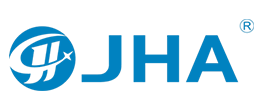NEWS CENTER
Shenzhen JHA Technology Co., Ltd is one of the leading manufacturers of hardened Ethernet, PoE, and fiber connectivity products specifically designed for harsh and demanding environments.


14
2025
-
06
Understanding Fiber Optic Converters: Essential Tools for Modern Networking
One of the primary advantages of using fiber optic converters is their ability to improve network performance over long distances. Unlike traditional copper cables, which can suffer from signal degradation and interference, fiber optic cables maintain high data integrity, allowing for faster and more reliable data transmission. This performance is crucial for businesses that depend on real-time data transfer and connectivity.
Fiber optic converters come in various types, including single-mode and multimode options. Single-mode fiber is designed for long-distance communication, typically exceeding 10 kilometers, while multimode fiber is suitable for shorter distances, usually under 2 kilometers. Professionals must consider the specific requirements of their networks when selecting the appropriate type of fiber optic converter.
Additionally, these converters are equipped with various interface options, including Ethernet, USB, and serial connections. This versatility allows them to integrate seamlessly with existing network infrastructure, enabling businesses to upgrade components without overhauling their entire system. As a result, fiber optic converters can significantly enhance a company’s productivity by ensuring uninterrupted communication between different network segments.
Another important aspect to consider is the installation and maintenance of fiber optic converters. While these devices are generally user-friendly, understanding the specific requirements for installation—such as cable type and connection methods—is essential for optimal performance. Regular maintenance checks can also help in identifying potential issues before they escalate, ensuring that the network remains operational.
Security is another critical factor when utilizing fiber optic technology. The inherent properties of fiber optics make them less susceptible to eavesdropping, providing an additional layer of security for sensitive data transmissions. This feature is particularly beneficial for industries that handle confidential information, such as finance and healthcare.
In conclusion, fiber optic converters are essential components in the modern networking landscape, offering enhanced performance, versatility, and security. Professionals in the computer and digital products sector should prioritize understanding these devices to optimize their networking solutions. By leveraging the capabilities of fiber optic converters, businesses can ensure robust connectivity that meets today’s demands for speed and reliability.
Fiber Optic Converter
Previous page
Next page
previous page
undefined
If you need to inquire about our products or price list, please leave
your email to us We will contact you within 24 hours.
Contacts

3rd Floor, No. 5 Building, Lian Jian Industrial Park, Shang Heng Lang, Long Hua New District, Shenzhen, China

0755-81 483343

amy@jha-tech.com

7 Days a week from 09:00 am to 6:00 pm
Copyright © 2022 Shenzhen JHA Technology Co., Ltd All Right Reserved
Seo Tag 粤ICP备19135367号 Powered by www.300.cn







